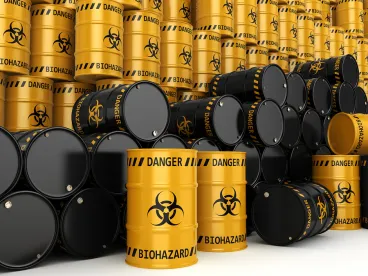As confirmed by an April 21, 2017 Defense Nuclear Facility Safety Board report, the Department of Energy (DOE) initiated the first in a series of long-awaited shipments of liquid Highly Enriched Uranium (HEU or target residue material) from Ontario, Canada’s Chalk River reactor to DOE’s Savannah River Site in Aiken, South Carolina. The target residue material stems from the legacy Atoms for Peace program, where the United States provided HEU for use, in part, as target material to be irradiated for the production of medical isotopes in foreign research reactors. Irradiating this target material and extracting the medical isotopes, including molybdenum-99 as in the case of the Chalk River reactor, left a residual solution containing significant quantities of HEU. Due to proliferation concerns, the United States wants the HEU returned for safeguarding and disposal.
The shipments come after a February 2, 2017 ruling by the US District Court for the District of Columbia denying a request to enjoin the shipments on National Environmental Policy Act (NEPA) grounds. The plaintiffs, led by environmental advocacy group Beyond Nuclear, alleged that DOE’s decision to ship the material in liquid form constituted a major federal action requiring a new or supplemental Environmental Impact Statement (EIS). DOE had completed an EIS in 1996 that assumed the material would be shipped in solid form. However, Canadian officials notified the DOE in 2008 that they could no longer convert the material into solid form prior to shipment. DOE performed Supplemental Analyses in 2013 and 2015 to evaluate the impacts of shipping the material in liquid form and determined that because the waste will be shipped in certified casks subject to the regulatory requirements of the US Department of Transportation and the US Nuclear Regulatory Commission, the impact of transporting the material in liquid form would not be significantly different from that evaluated in the previous EIS.
The plaintiffs argued that shipping the waste in liquid form would be too dangerous and therefore constituted a substantial change from the previous EIS, requiring DOE to complete a new EIS. However, the court found that DOE’s reliance on the Supplemental Analyses complied with both NEPA and DOE’s associated regulations. The court stated, “[T]he agency did, in fact, give a hard look to a wide range of factors, evidence, and statistical analyses regarding environmental impacts in numerous different scenarios, which allowed DOE to come to the conclusion that the environmental impacts were not significantly different from those already considered.” While recognizing that the plaintiffs disagreed with DOE’s technical analysis, the court stated that it must defer to the agency’s “informed discretion.”


 />i
/>i

